Howells CNC - 28 Haas machines & rising
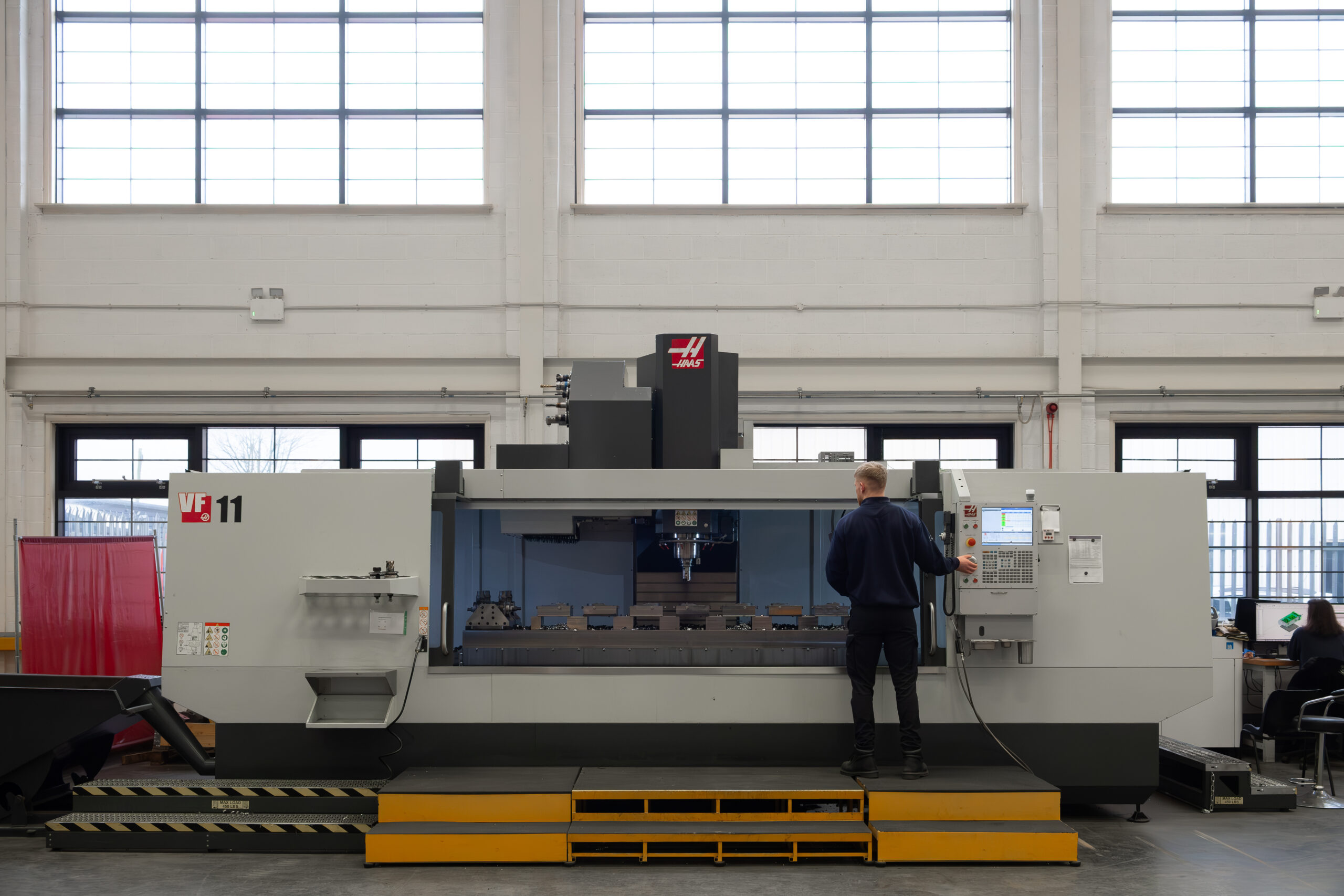
Founded in 1947 Howells Railway Products Ltd remains an independent, family-run firm. All engineering and assembly work is carried out under one roof at their facility in Wythenshawe, Manchester, which is filled exclusively with Haas CNC technology. Comprising UMC 5-axis machines, vertical machining centres, mini mills, 2-axis and Y-axis turning centres and toolroom lathes, the company has a total of 28 machines, housed in a purpose-built 40,000 square foot CNC workshop.
David Howells, managing director, explains: “We examined the CNC machine tool market very carefully, and concluded that the Haas machines offered us the best levels of accuracy and dependability for the right money. “After seeing them in action at the showroom, including some astonishing cuts being made by an ST-30, we knew Haas were the right machines for us. “The first batch of machines was installed in late 2013, and we have continuously expanded our capabilities by investing in more Haas equipment. Every machine has benefitted us and is always carefully selected to address our growing requirements.
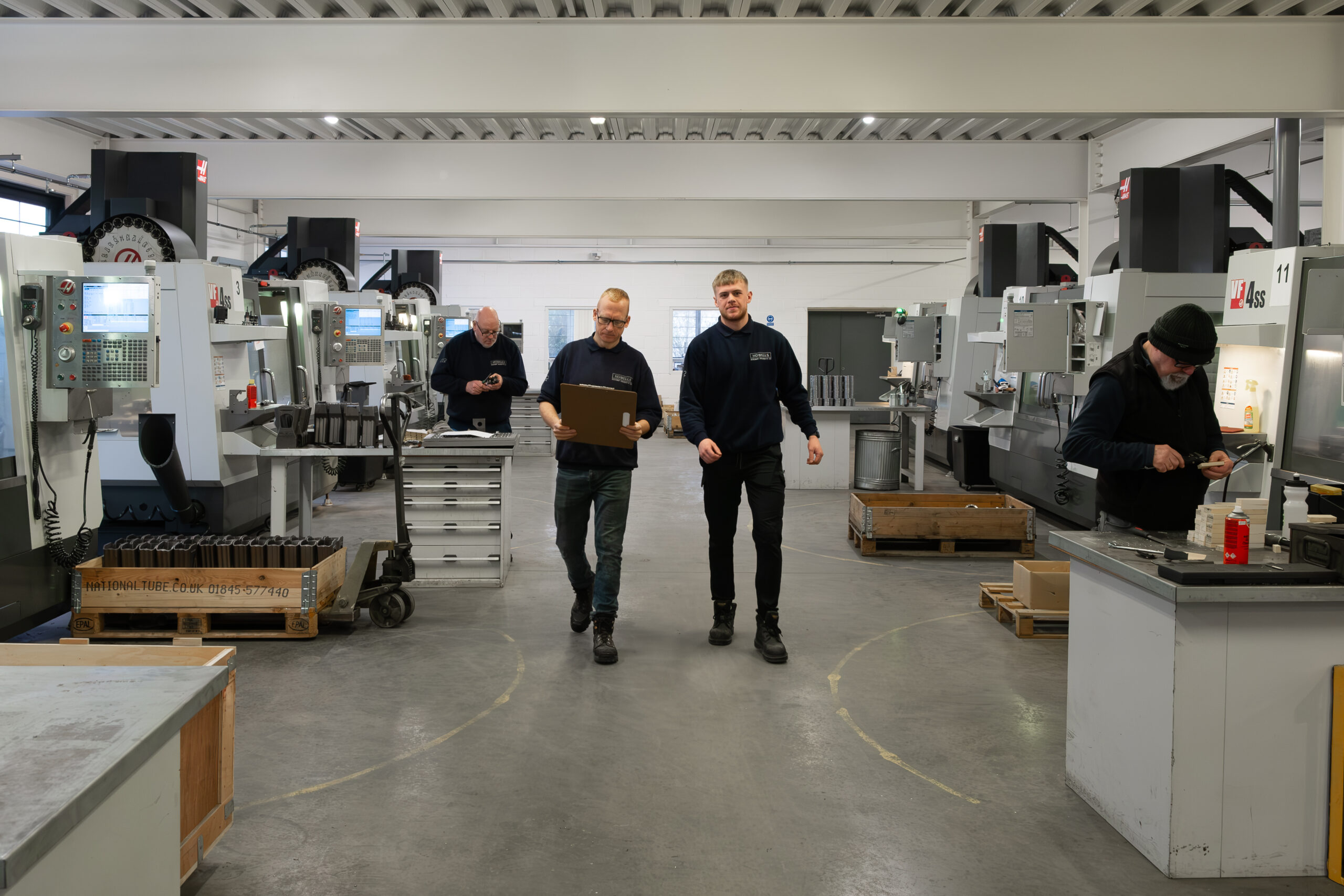
“With the help of the Haas applications department we’ve tweaked our processes to be as efficient as possible. By changing the order of operations and adjusting certain cycle times we’ve increased machine runtime to its optimum level. One operator can comfortably run three machines; because of the shared Haas control our operators are equally at home on both the mills and lathes. This was particularly beneficial during the Covid19 pandemic. As a critical supplier to Network Rail, we reopened the factory within a few days. With skeleton staffing and social distancing measures we were really pleased we had chosen one machine tool supplier; the ability to run multiple machines with the same control allowed us massive flexibility.”
Howells Railway’s latest investments have been on an even larger scale. An ST-45L long bed turning centre, VF-11 50-taper large frame vertical machining centre and a UMC-1000 5-axis universal machining centre have all been added since 2020. “This is where we’ve seen the most benefit. The VF-9 gave us extended travel, but the VF-11 has taken it to another level with the 50-taper tooling and power available. The increased machine stability has allowed us to completely change our processes which halves our cycle times and frees up three VF-4 machines.
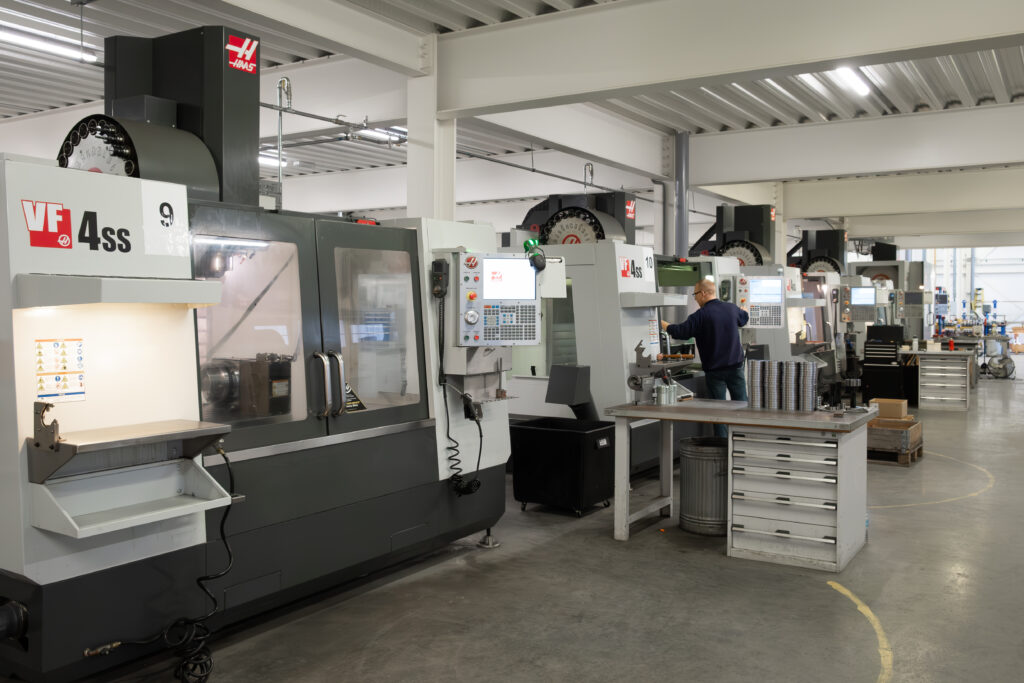
Justin Johnson, machine shop manager agrees, “It’s the same with the ST-45L lathe. What was a 2-stage process is now made in a single cycle, also halving production time. This allows us to maintain a more accurate concentricity and consistency within the different diameters along the profile. It also frees up an operator as the process can be run by one person.
“The newer machines are packed with extra features which come as standard and are genuinely helpful in their day-to day running. Increased memory enables us to run more complex programs and edit a program while the machine is running. The touchscreen hand pendant makes manual jogging simpler. The spindle body has been improved for better clearance and the automatic doors relieves strain for the operator. Everything is designed for ease of use.
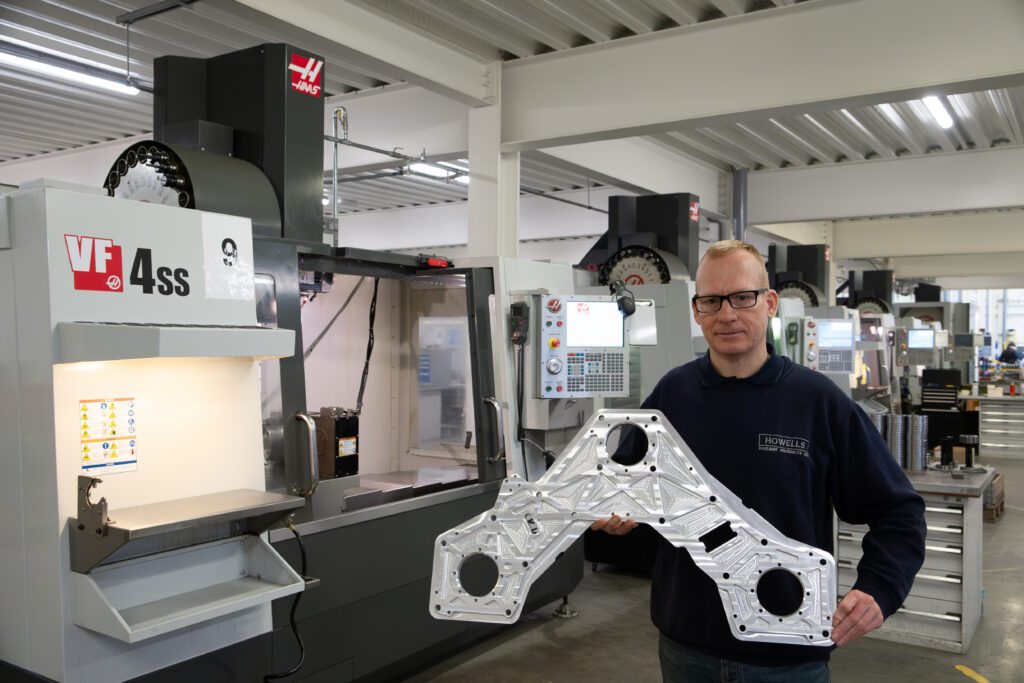
“Most of our VF-4SS verticals are equipped with Haas rotaries and are used to cut component parts for the motion units, says David. “These need to line up when assembled and precision is crucial. We’ve found the rotaries to be extremely accurate; within 0.25° over the dozen or so turns in this final operation.
“Apart from the forgings, which we managed to source from a UK company, everything is manufactured in-house. This means we can keep a close eye on quality at every stage. All parts go through numerous safety sign-offs and assembly checks and similarly to aerospace, there’s a double documentation trail to ensure traceability and compliance.
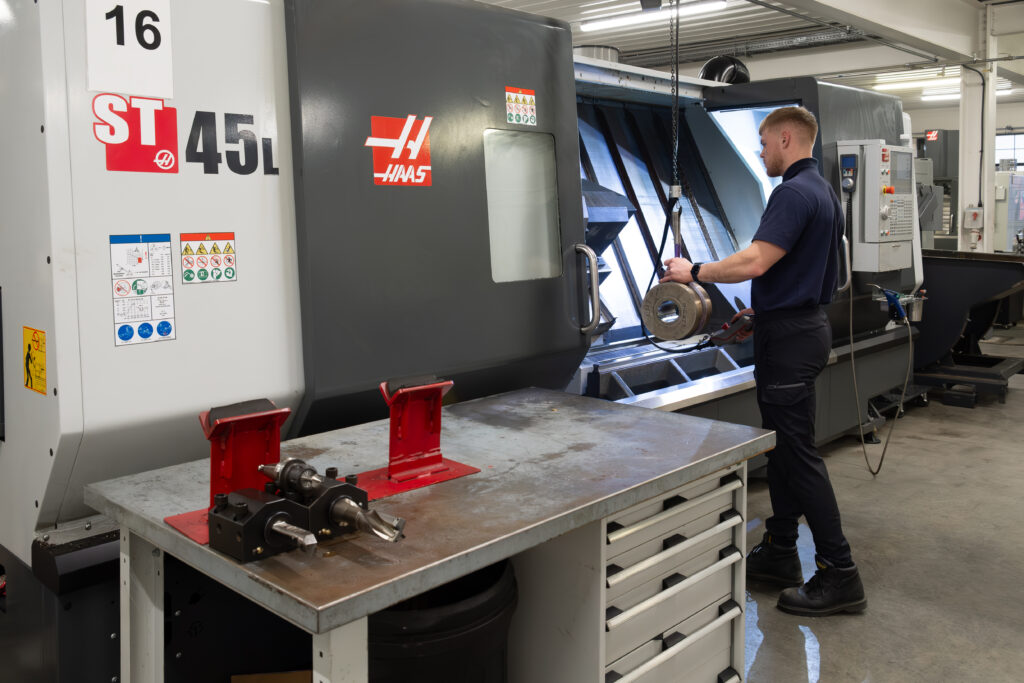
“The two UMC-750s were not part of our original plan for the machine shop re-fit, however the value and capability offered were simply too good to ignore, so we decided to go the extra mile and future-proof ourselves. We’re glad that we did; we’ve worked with a combination of 3 and 4-axis setups on the existing VMCs, including multiple 4-axis drives on the same machine, but the UMCs gave us fully synchronous 5-axis capability.
“This has proved invaluable to us giving a rapid turnaround for the fixtures used on our robotic fibre laser welder, along with simplifying some of the longer multiple operation machining on our traditional product lines to single operation.
“The UMC-1000 has enabled us to take on an even larger part. This part has a series of bored holes, slots and profiles on each face that have critical dimensions; all of these can be achieved on the UMC-1000 in one operation.
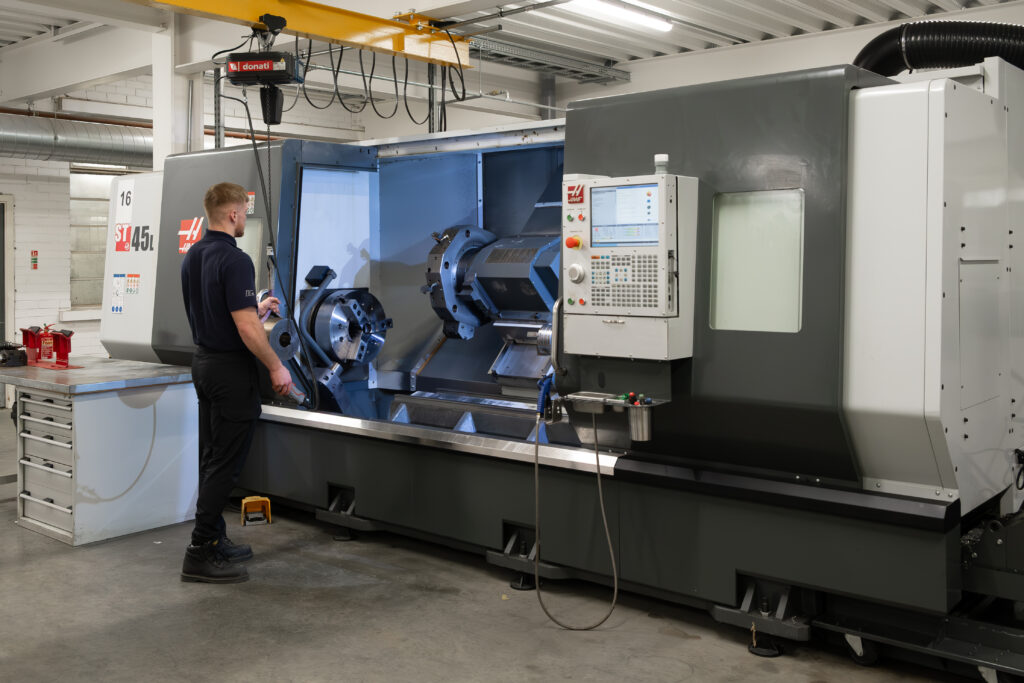
“Service remains as great as ever and training requirements are minimal as our machine shop is exclusively Haas now. We are also looking very carefully at how we value our machines too given that they remain as accurate and reliable as the day we purchased, we’ve checked accuracy and spindle wear on the oldest and most heavily used machines, and all are within original tolerances for a new machine.
“It’s an exciting time for us,” David Howells concludes. “We’ve changed more in the last few years than in the previous sixty. The rail sector remains our major client, however we are now looking to move into other sectors and have formed a dedicated division within our company to non-rail customers as Howells CNC. As our range of products has become more technologically innovative, so has our approach to their production. Thanks to the Haas machines and the changes we’ve made as a company, we’re doing things quicker, better and more efficiently whilst also improving quality. Every time we have a requirement, Haas has a machine that fulfils it.”
0161 945 5567
“Thanks to the HAAS machines and the changes we’ve made as a company, we’re doing things quicker, better and more efficiently whilst also improving quality.”
David Howells, Managing Director




